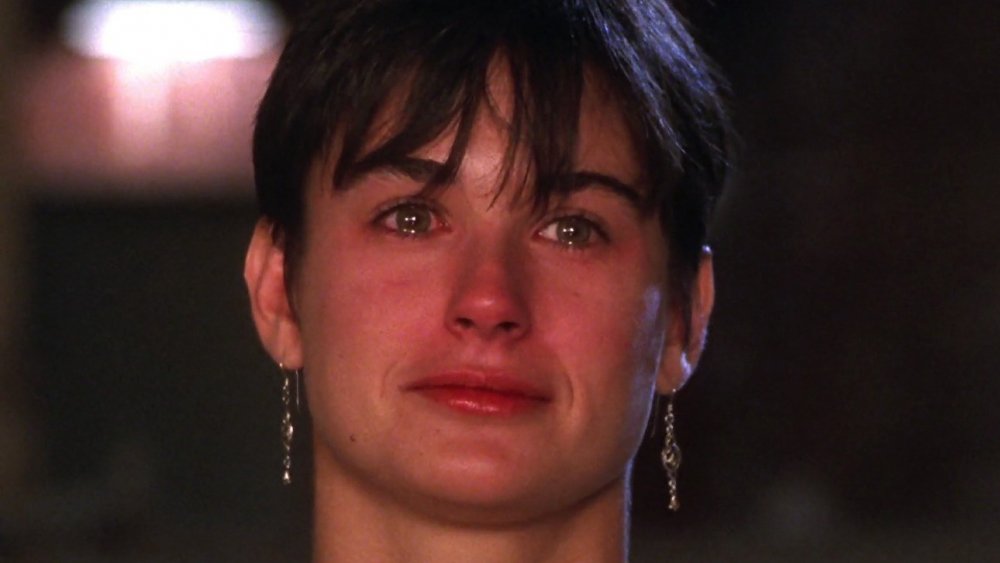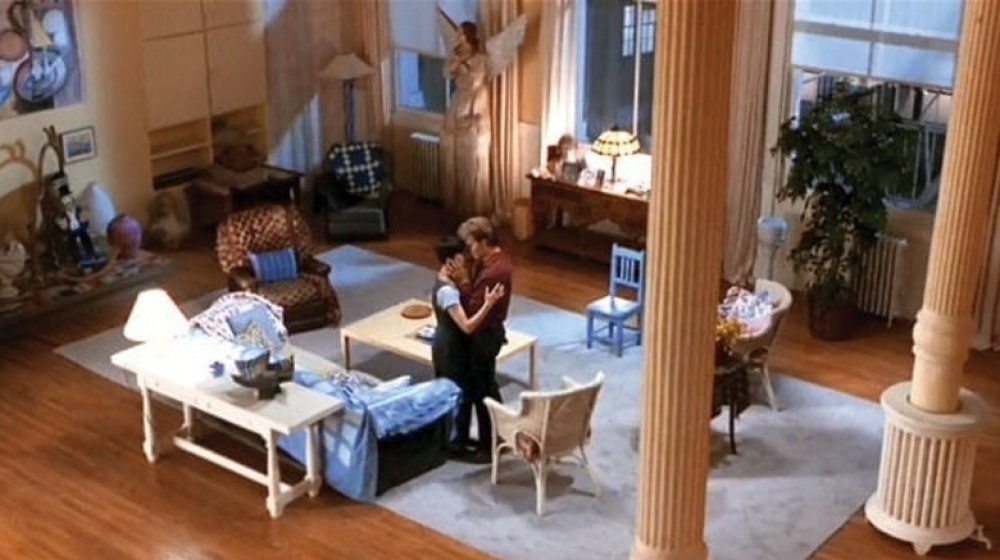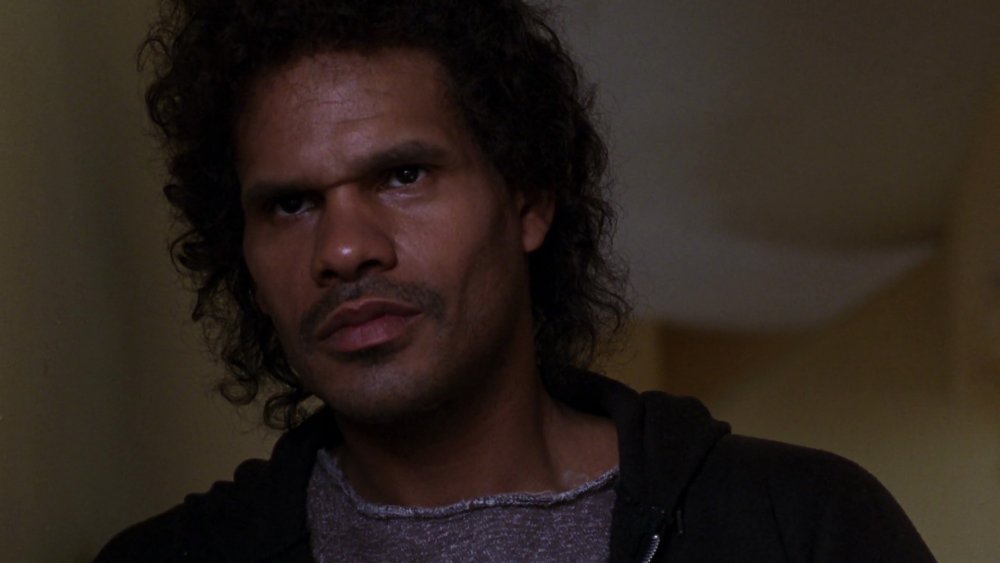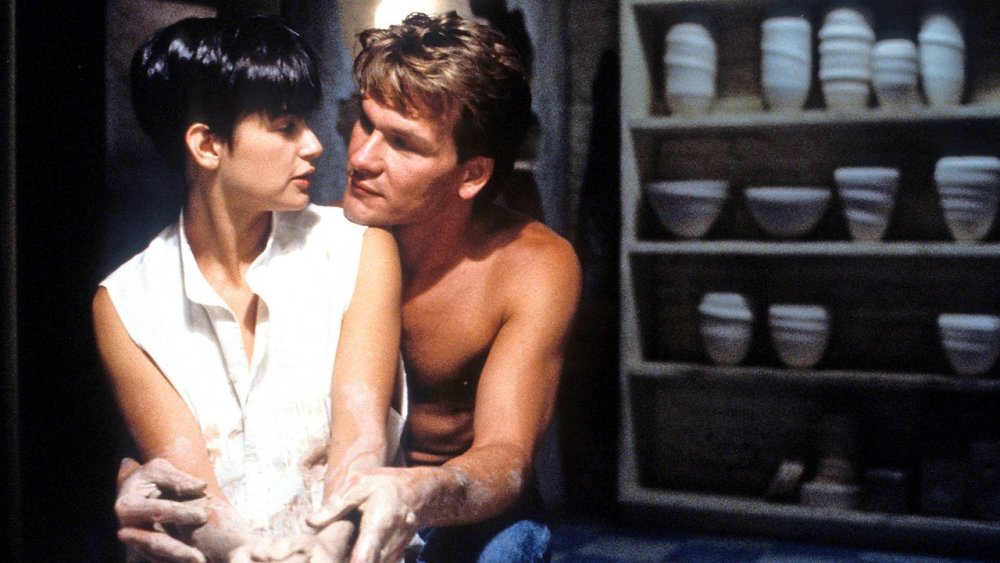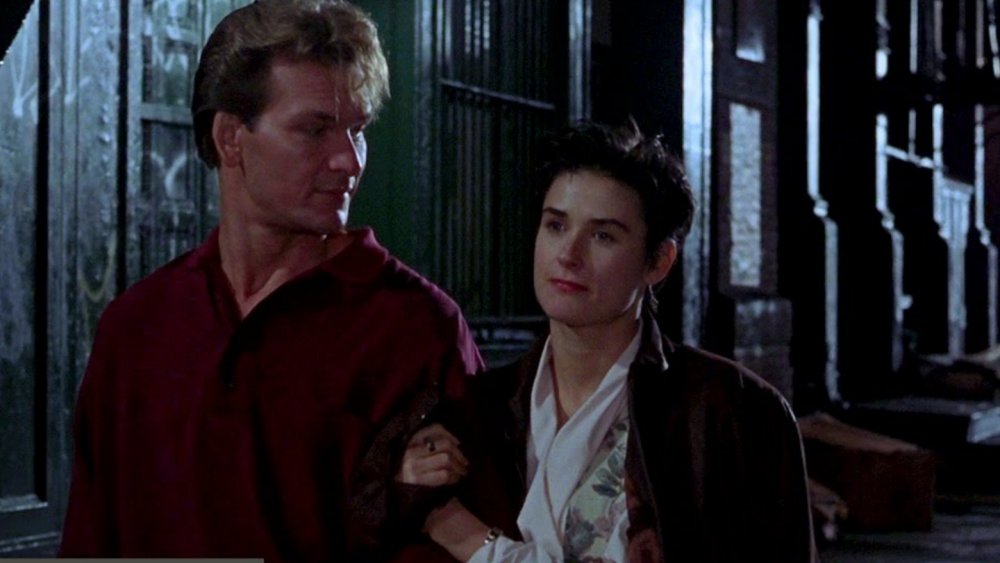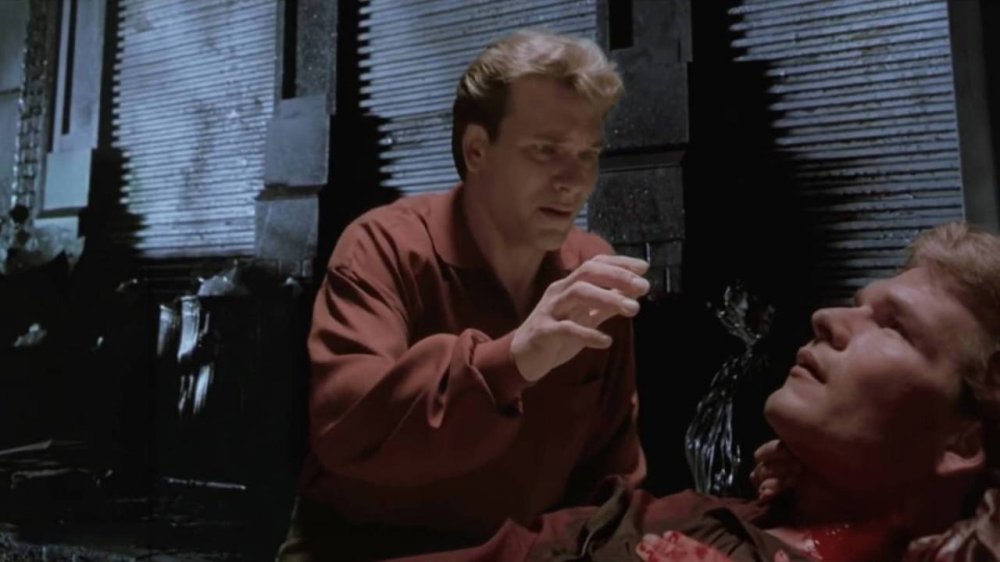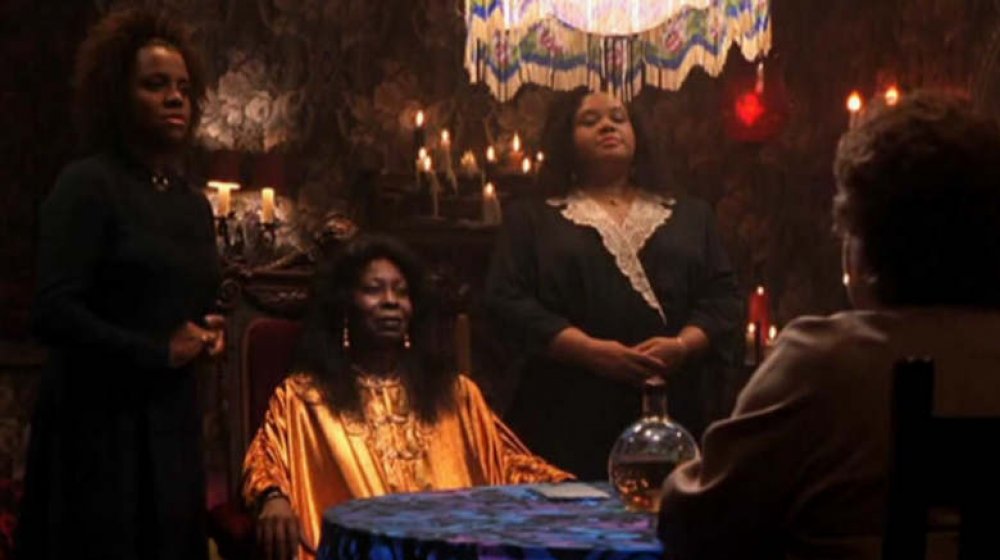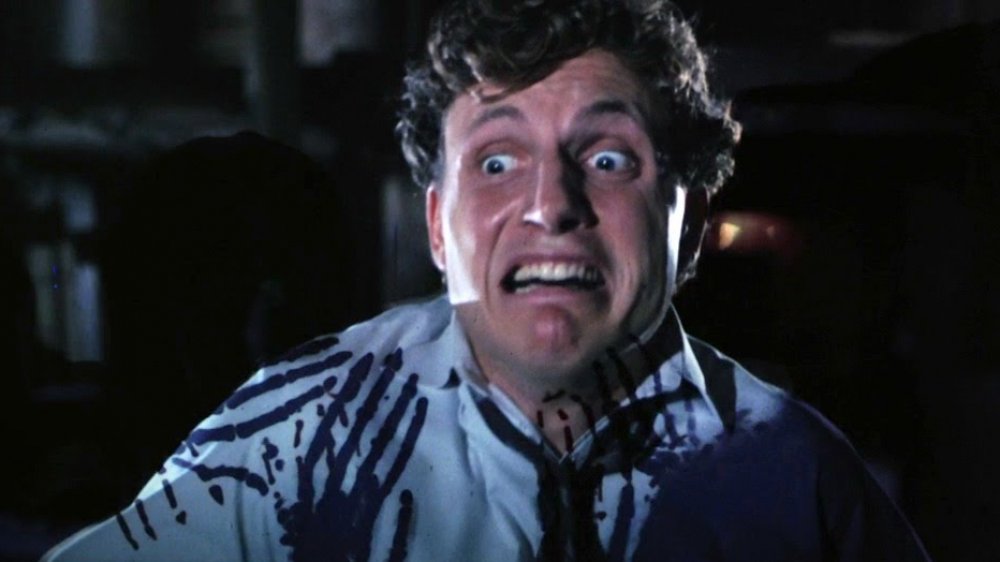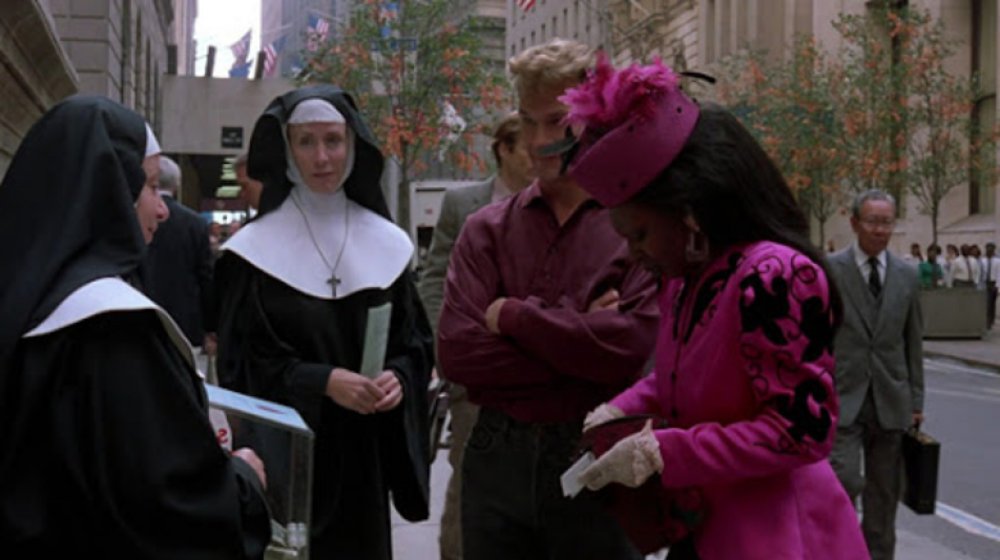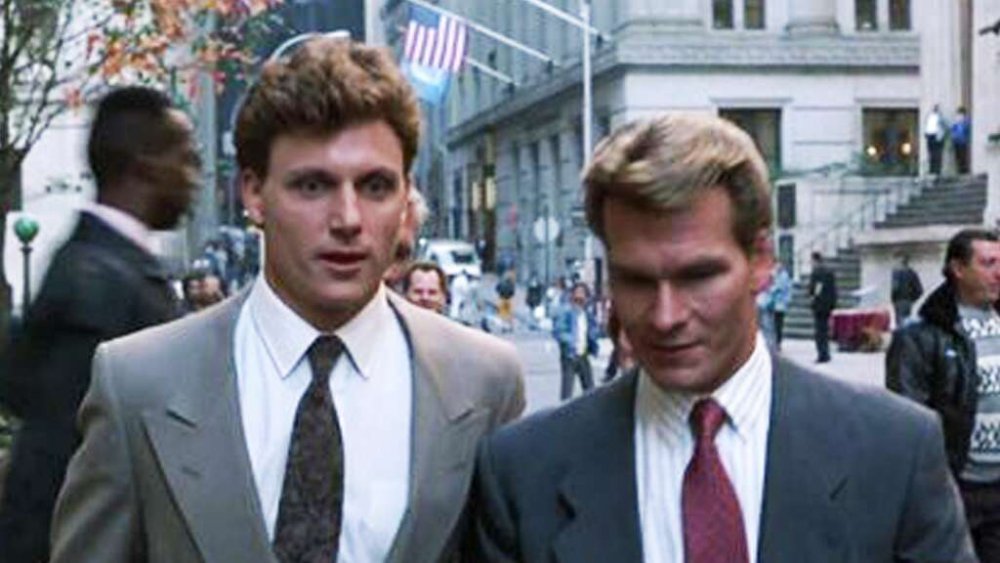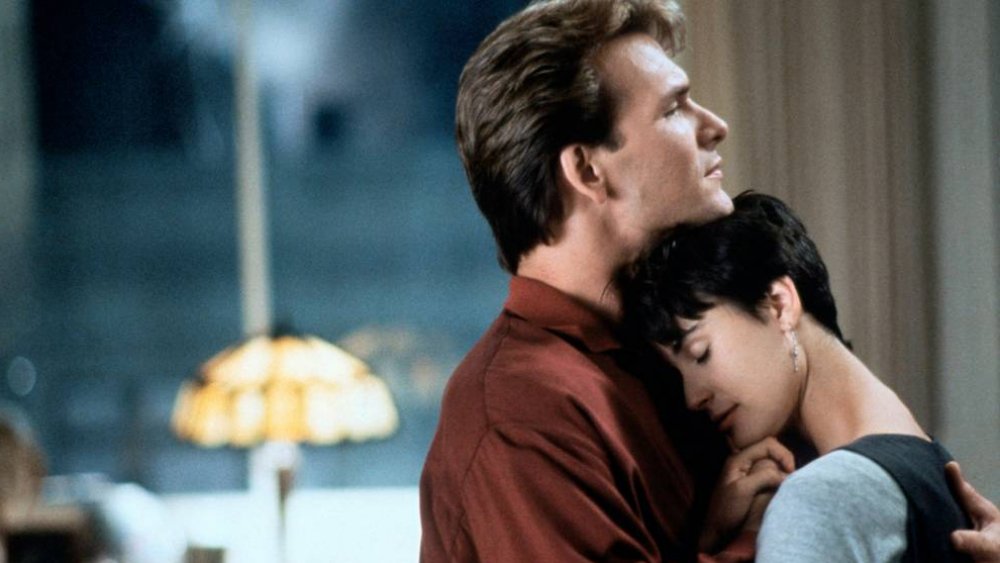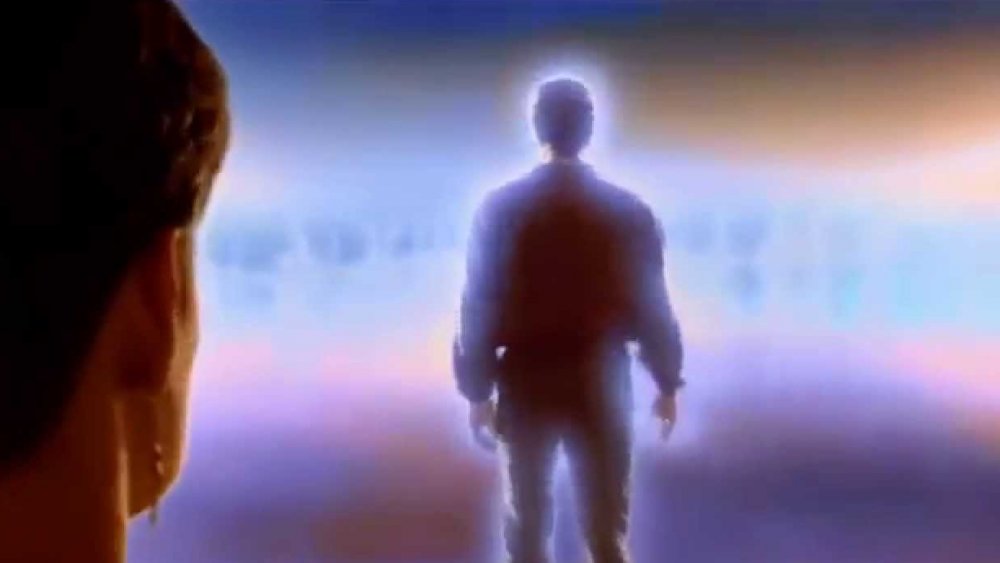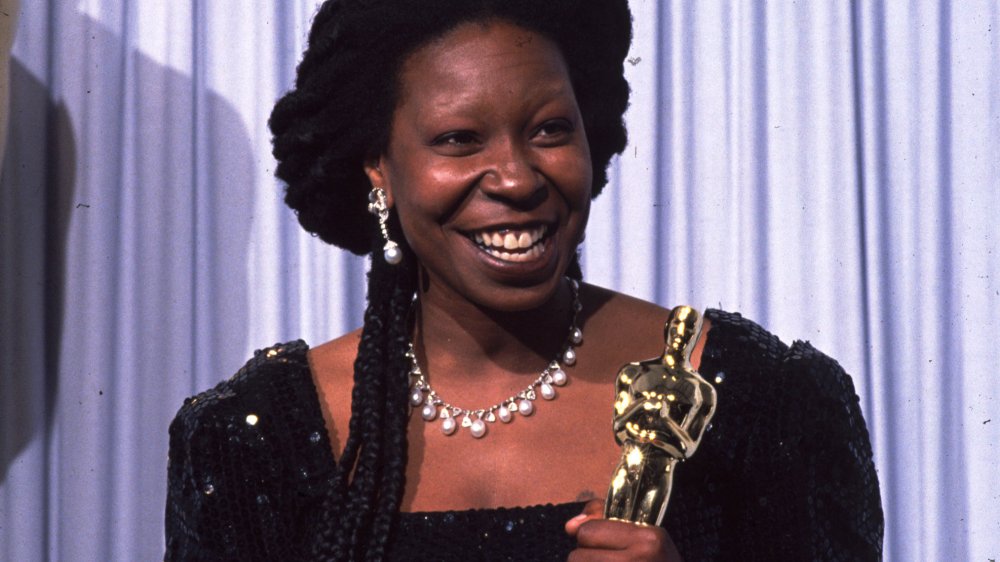Things You Forgot Happened In Ghost
Ghost premiered in 1990, starring Patrick Swayze as banker Sam Wheat, who finds himself navigating the afterlife after he's shot to death in a New York City alleyway. Demi Moore, whose short pixie cut quickly became all the rage, plays Sam's girlfriend, Molly Jensen. Molly experiences unspeakable trauma and spends most of the film in mourning. Sounds like a sad movie, right? But Ghost is surprisingly hilarious. Enter Whoopi Goldberg as Oda Mae Brown, a fake psychic who discovers her real powers when Sam finds out that she can hear what he's saying from beyond the grave. Sam and Oda Mae team up to try and get Molly to believe that he's really communicating with her from the land of the dead. Molly wants to believe, but is also being manipulated by Sam's former banking colleague, Carl Bruner (Tony Goldwyn), the man behind Sam's murder.
Ghost is a memorable movie, especially if you're into romances or '90s cinema. But what most people remember about Ghost is the steamy love scene between Swayze and Moore that happens alongside a pottery wheel, set to The Righteous Brothers' "Unchained Melody." If that's all you remember about Ghost, you're seriously missing out. These are the best parts of Ghost you've managed to forget in the decades since its debut.
Sam and Molly are definitely millionaires
Let's face it: Sam is a banker with his own office in New York City. He probably makes loads of money. It's hard to feel bad for millionaires, but at least Sam is a nice guy. In contrast, Molly is an artist, concentrating in pottery. Is she a successful artist, selling elaborate pieces to the wealthy bidders of New York? Or is she a girl with a dream, with Sam supporting her artistic endeavors? We don't really know, especially since Sam's death doesn't spur any questions about how Molly is going to be able to afford anything — especially their lavish apartment.
Sam and Molly's apartment is the most major indicator of the duo's wealth. According to The New York Post, their digs are located at 102 Prince Street, the heart of swank SoHo. The loft is 4,340 square feet, with three bedrooms and three-and-a-half baths. "The full-floor unit comes with a private elevator landing with double-entry doors that lead to a 44-foot-long gallery," the Post writes. In 2015, the place went up for sale for a cool $10 million. These days, the area is home to a swanky Apple store and designer apparel shops like Louis Vuitton and Prada.
Willie Lopez would have been priced out
Sam's murderer, Willie Lopez, lives in Prospect Heights, Brooklyn, an area that's seen a lot of gentrification since the movie's debut. After Sam convinces Oda Mae to help him, they both go to Molly's apartment, where Oda Mae warns her that she's in danger. Oda Mae tells Molly that Sam's killer Willie Lopez lives at 303 Prospect Place, which is basically right down the street form Oda Mae's psychic shop.
Unlike Sam and Molly's loft, 303 Prospect Place doesn't actually exist: The street jumps straight from 299 to 305. But checking out the area in real life, you'd be hard pressed to find the run down, garbage-filled, struggling place in which Willie lives. Prospect Heights might have been rough and tumble back in the 1970s, but as The New York Times reported in 1988, two years before Ghost hit theaters, the area had started changing in a major way. The Brooklyn hipster scene really took over in the late '00s, and these days, Prospect Heights is a quiet area where trees tower over expensive brownstones. Willie and Oda Mae would have been feeling the squeeze at the time of the film's premiere, and would definitely have been pushed out by skyrocketing housing prices in the following years.
The truth about "Unchained Melody"
Sam and Molly's pottery wheel foreplay is probably the most memorable part of Ghost. Indeed, the scene was responsible for 1990's revived appreciation for the 1965 Righteous Brothers hit, "Unchained Melody." But the history behind the lyrics of this song is a little more grim. The song was originally written in 1955 for the movie Unchained. Based on the book Prisoners are People, this film was low-budget and earned minimal acclaim. The titular song actually tells the story of a prisoner in jail longing for the woman he loves, asking if she'll wait for him. The Righteous Brothers recorded their version 10 years later, and between then and 1990, the song was covered a number of times by a variety of artists.
Then came Ghost, and as The Atlantic writes, the song "shed its early associations with the romantic frustrations of prison life," and became a powerhouse ballad. As The New York Times later reported, "In 1992, the American Society of Composers, Authors, and Publishers issued "Unchained Melody" an award for being the year's most-performed song. In 1999, [the same organization] said it was one of the 25 most-performed songs and musical works of the 20th century." That's a long way from a little prison ditty.
Sam and Molly actually take a pretty dangerous walk home
On the night of Sam's murder, he and Molly have tickets to see a production of Shakespeare's Macbeth. After the show, they decide to walk home. But Sam and Molly's stroll back to their swank Prince Street apartment isn't the pleasant walk they planned on. Then again, it's not really clear why they assumed it would be a pleasant walk to begin with. From what it looks like, Sam and Molly walk down Crosby Street. There are few street lights down this road, and the cobblestones make for a precarious trek to take in the dark. They could have easily walked down Broadway, or a more well-lit street, where someone like Willie Lopez couldn't hide. Now, surely they didn't deserve such tragedy because they chose a sketchy walk home. But watching the movie again, you wonder why they walk so achingly slowly down such a dangerous-looking street, and even take pauses to canoodle.
Patrick Swayze's dead body double is seriously creepy
After a struggle for Sam's wallet, Willie Lopez shoots Sam and runs away down the street. What the movie shows is Sam running after him, then returning to the scene of the crime once Willie gets away. There, Sam sees a horrifying sight: His own bleeding, lifeless body lying in Molly's arms. Today, this trick could be handled with some kind of CGI filmmaking that would look seamless and probably not even be that difficult to pull off. But back in 1990, CGI wasn't anywhere near as advanced or omnipresent. So Ghost created a life-size plaster dummy of Patrick Swayze for Demi Moore to hold in Sam's death scene — and boy, is it creepy looking. It totally works, is the thing: It looks like Sam, but with a cold, unnerving stare, and corpses do indeed look unnerving. But there's only so much realism viewers want in a movie like Ghost, you know?
Oda Mae's sisters are pretty funny
Whoopi Goldberg provides Ghost with its much-needed comic relief. Sure, Swayze gets some one-liners in there that are pretty funny, but Goldberg is the humorous heart of the movie. But while praising her comedic genius, viewers often overlook the two women who portray her sisters: Gail Boggs, who plays Louise, and Armelia McQueen, who plays Clara. From their hysterical reaction when Oda Mae realizes she's talking to a white ghost to their preference for Love Connection over Arsenio Hall, the two sisters add an additional layer of comedy that gives Ghost an immense amount of charm. Additionally, they're extremely protective of their sister. When Willie Lopez attacks their home and fires a gun at Oda Mae, the two sisters are right there the whole time, protecting their family with everything they've got. Honestly, they could carry a movie on their own shoulders: They've proven their comedic, dramatic, and action-packed chops.
The ghosts from Hell are actually pretty goofy looking
When Willie Lopez and Carl Bruner die towards the end of Ghost, terrifying demons from Hell (or whatever underworld the film subscribes to) emerge from the shadows and drag them into an afterlife of well-earned torture. You might remember these specters as scary, especially if you first saw the film as a kid. But upon re-watching, you might realize that Ghost could use a bit of a CGI upgrade. These monsters are oddly clunky, and sometimes look like they're smiling, which looks a little more silly than it does creepy. They certainly sound awful though — that particular detail has not grown any less potent with age. As People reported, "The horrible noise they make is actually the noise of a baby crying -– played slow and backwards." Yikes. Okay, maybe they're not so silly after all: Demon baby wailing is about as horrible as it gets.
Whoopi Goldberg encounters some nuns
Two years before Whoopi Goldberg played a singing nun in the beloved Sister Act movies, she had a run-in with a couple of habit-clad sisters in Ghost. After Sam helps Oda Mae drain Carl's money laundering account of $4 million, she struts down the street in a fabulous hot pink suit dress and hat, thinking she's hit the jackpot. But as Sam reminds her, it's blood money — his blood, specifically — and she can't keep it. Thus, Oda Mae reluctantly signs a $4 million check to a charity being promoted on the street by a pair of nuns. The sisters are pretty plainly shocked by the amount, but obviously pleased.
Re-watching Ghost after the huge success of Sister Act in 1992 and Sister Act 2: Back in the Habit in 1993, one can't help but see these nuns as a premonition of success in Goldberg's future. Or, at least, as a fun little detail for devoted fans to chuckle over.
It's never really explained why Carl kills Sam
While there are many things that people remember about Ghost and many things that people forget, one thing that no one's ever really figured out is what Carl was up to in the first place. The entire premise of the robbery and murder isn't particularly clear. What we can surmise is this: Carl is involved with drug dealers who are asking him to launder money, though its never really indicated that Carl is using drugs himself. He creates an account to launder the money, though from where the money comes isn't clear. Carl needs Sam's wallet because Sam keeps all of the passwords to all of the accounts that Carl is ... maybe stealing the money from? Either he or his drug dealer boss hires Willie Lopez to steal Sam's apartment key. Of course, we all know the robbery goes wrong and Sam dies. But Carl's plan is never really clear to begin with, and makes for a confusing plot point. Thankfully, Carl's plot takes a backseat to the rest of the movie and the lack of clarity mostly gets ignored by audiences.
Oda Mae and Molly have a pretty sexy encounter
Towards the end of the film, while Molly and Oda Mae are waiting for police to arrive, Sam waits with them. Earlier in the film, both Oda Mae and Sam witnessed the fact that ghosts can use the bodies of the living for a short time. Thus, Oda Mae generously allows Sam to use her body to give Molly a final embrace. There's a moment when Oda Mae's hands, nails painted dark red, reach for Molly's, before the scene cuts to Swayze in Oda Mae's place. "Unchained Melody" plays once again as Sam and Molly hold each other and dance slowly, locked in a loving embrace. Once you realize that it's actually Oda Mae's body that Molly is dancing and touching, however, the scene takes on a completely different tone. It's a tricky balance, placing Swayze in the scene to convey the transcendent truth of the farewell instead of its literal set-up. The scene works, but also changes dramatically depending on what parts the viewer chooses to focus on.
There are tons of people waiting for Sam when he finally crosses over
Many people hope to find their loved ones in the afterlife, happy and awaiting their arrival. When Sam first dies early in the film, a bright white light shines down from the sky, urging him to follow it and leave his body behind. However, he obviously has a little more work to do on the mortal coil. At the end of the film, when Sam has had a chance to finish his task and keep Molly safe, the white light returns. But eagle-eyed viewers will notice that the white light that Sam walks into isn't just an opaque luminescence. There are human-shaped figures waiting for him, who ultimately surround him and embrace him as he enters the afterlife. It's a lovely touch that brings a tear to the eyes of viewers who long to see their loved ones once again.
Ghost was nominated for (and won) Academy Awards
While this detail is something you may not remember about Ghost, it's not from the film itself, but from its reception. Ghost was nominated for a substantial number of Academy Awards, winning two of them. The most notable win was Whoopi Goldberg's, who took home the Oscar for Best Supporting Actress. Goldberg also won a Golden Globe that year for the same performance. Ghost won its second Oscar for Best Screenplay Written for the Screen, the trophy going to screenwriter Bruce Joel Rubin. Ghost was further nominated for Best Original Score, Best Editing, and in a big surprise, Best Picture. It's not often that films involving elements of fantasy and supernatural fiction get nominated for Best Picture, but Ghost joined the ranks of The Exorcist and Field of Dreams that year with its nod. This group was later expanded by The Sixth Sense and The Shape of Water.
